

The goal of cancer screening is to identify asymptomatic cancer well before it causes symptoms or death. This means that there is a long “lag time” before a patient sees a benefit from these screening tests. This is in direct contrast to harms, which often occur rather immediately with these screening tests. It would make sense then for us as health care professionals to focus cancer screening on those most likely to benefit from these medical interventions, and conversely, avoid screening in those who are unlikely to live long enough to see a benefit but will be exposed to immediate harms. The problem is that as health care professionals, we aren’t very good at this.
Multiple GeriPal posts have documented the health care systems proclivity at performing cancer screening in indivudals with a poor prognosis. For some egregious examples, just take a look at these posts about cancer screening in those with dementia (here and here) and those with unresectable cancer (here and here). It got so bad that back in 2010 Alex Smith wrote the following challenge in a post about “Dumb Medicine“:
We need to train providers to have these difficult conversations, create health systems that flag patients with limited life expectancy who are receiving potentially harmful tests and interventions of little benefit, and educate the public about the harms of overtesting and overtreatment.
Well, Alex and a bunch of us GeriPal’ers took this challenge to heart by creating a free ePrognosis: Cancer Screening decision support app to help guide conversations with elderly patients of whether to start, stop, or continue breast cancer and/or colorectal cancer screening. You can download it here for iPhones and iPads to try it out, or continuing reading to get a brief overview of what it does.
Overview of the ePrognosis Cancer Screening App
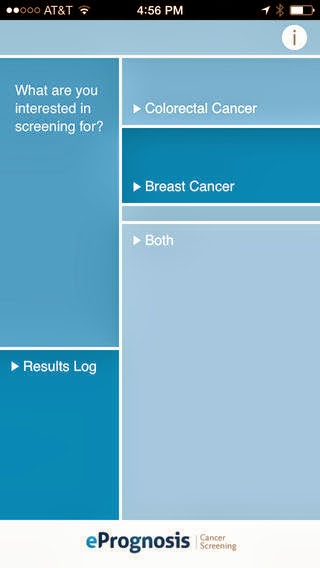 |
| ePrognosis home screen |
When you start the app you’ll see the start screen asking you whether you are interested in screening for colorectal cancer, breast cancer, or both. Once you make a selection the app runs you through 15 health related questions including age, gender, BMI, symptoms, and functional impairment to calculate a mortality risk to estimate life expectancy.
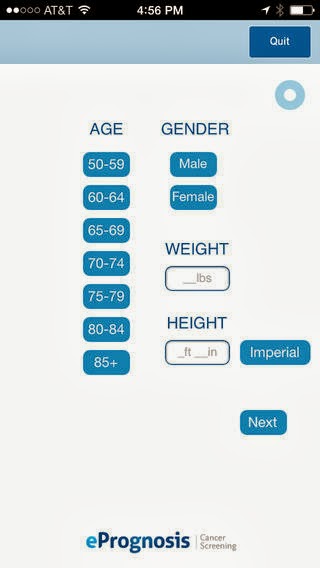
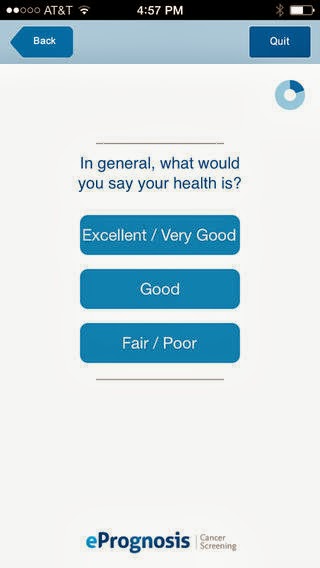
Based on the response to these questions, you will be shown a speedometer like image that can help inform whether cancer screening is more likely to help or harm a patient. You can also click on the “harms” or “benefits” buttons to learn more about what these may include.
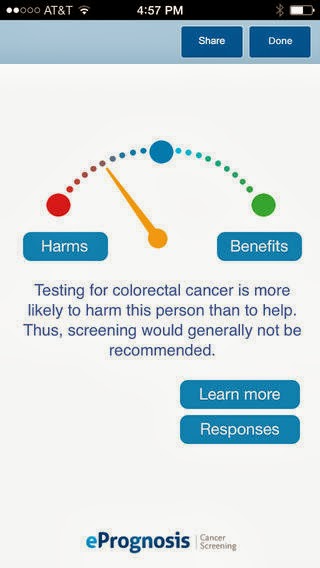
Lastly, you can also click the learn more button, which will run you through a series of pictographs (each pictograph is of 1,000 squares where each square represents one person). These pictographs visually display information on harms and mortality benefits from cancer screening, as well overall mortality risk at 10 years.
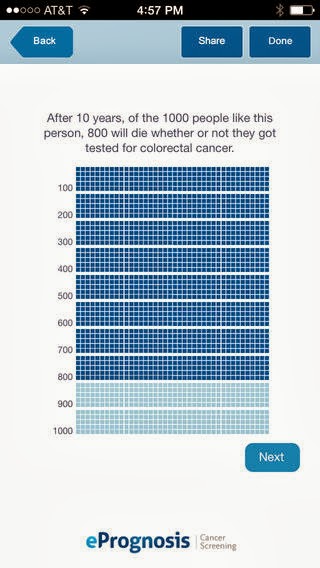 |
| Overall mortality pictograph |
Feedback
So give the ePrognosis app a try and tell us what you think. What works well? What can we do better? Comment below!
by: Eric Widera (@ewidera)
Here is the full link to the app: https://itunes.apple.com/us/app/eprognosis-cancer-screening/id714539993?mt=8



